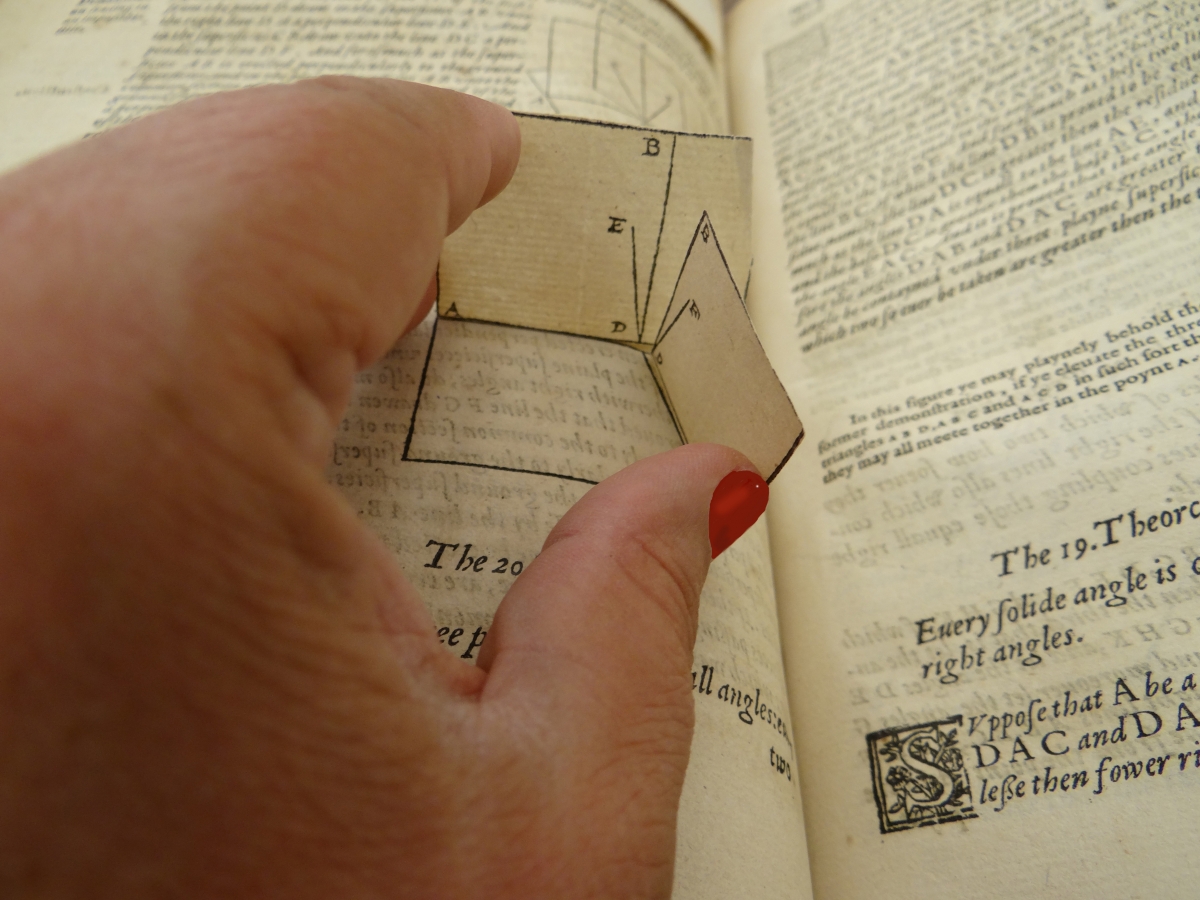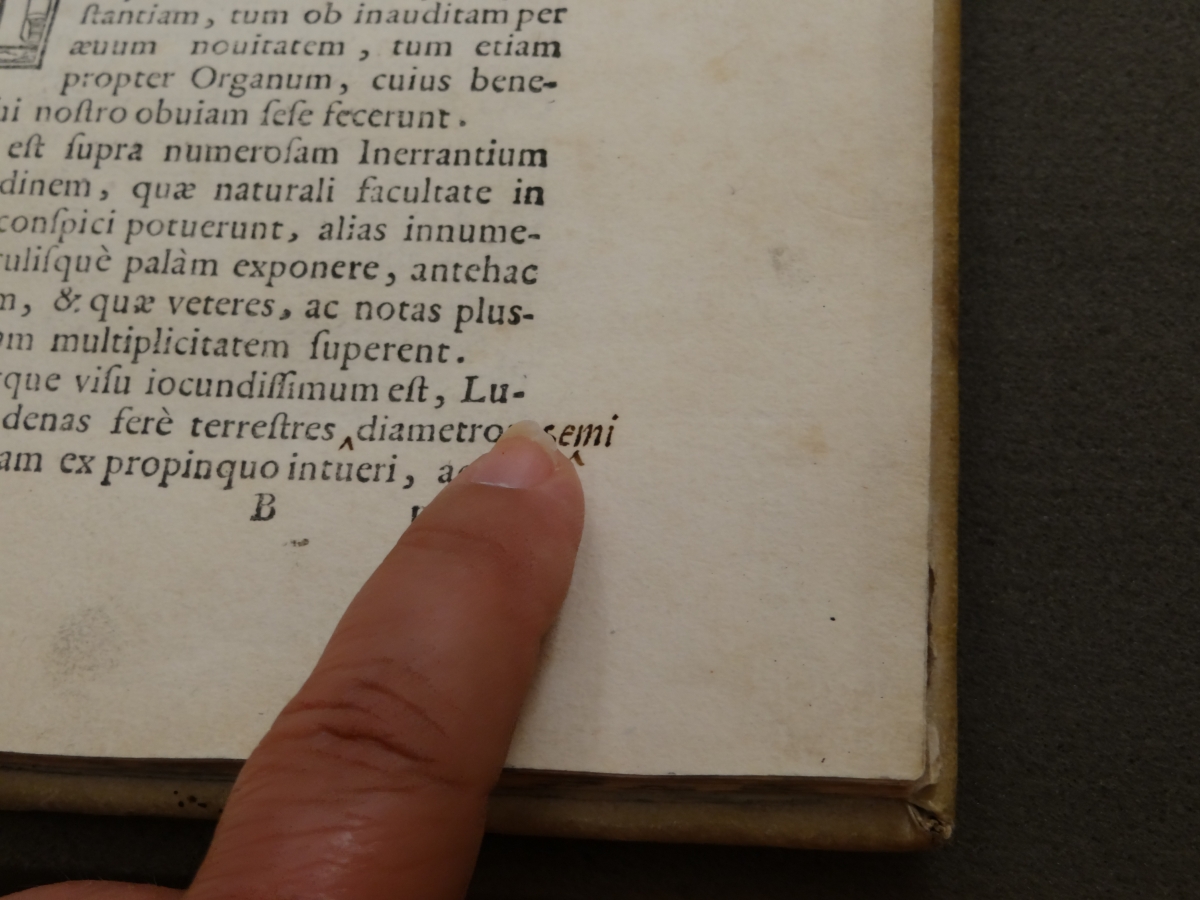Mathematical Treasures at the Linda Hall Library – Introduction
Imagine being able to hold a 1482 first edition Euclid’s Elements of Geometry in your hand—one of the first mathematics books to be printed after Gutenberg introduced movable type printing to Europe. (A) Or, to explore the “pop-up” figures in the first printed English translation of the Elements. (B) Or, to lay out multiple versions of a work such as the Elements for comparison. (C) Would you like to investigate a book that Sir Isaac Newton once owned and heavily dog-eared? (D) Or, to touch where Galileo himself made a correction in a book? (E) Or, from the comfort of your own home or office, virtually look through the pages of Disquisitiones Arithmeticae by Gauss? (F) Or, maybe you want to download images of Cardano’s Ars Magna to use in your algebra course. (G) This article will enlighten you as to how these experiences and more can be yours, if you visit the Linda Hall Library either virtually or in person.
(A) 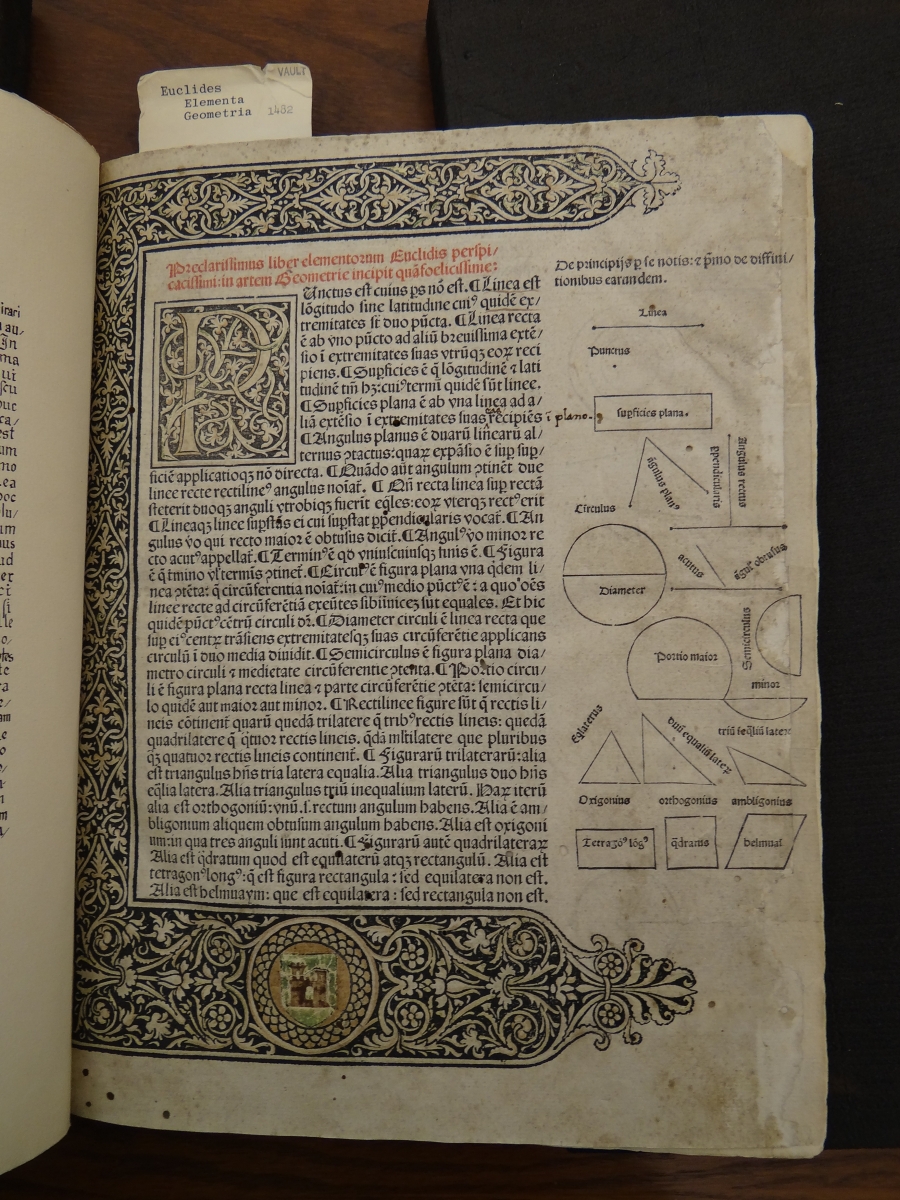
(C) 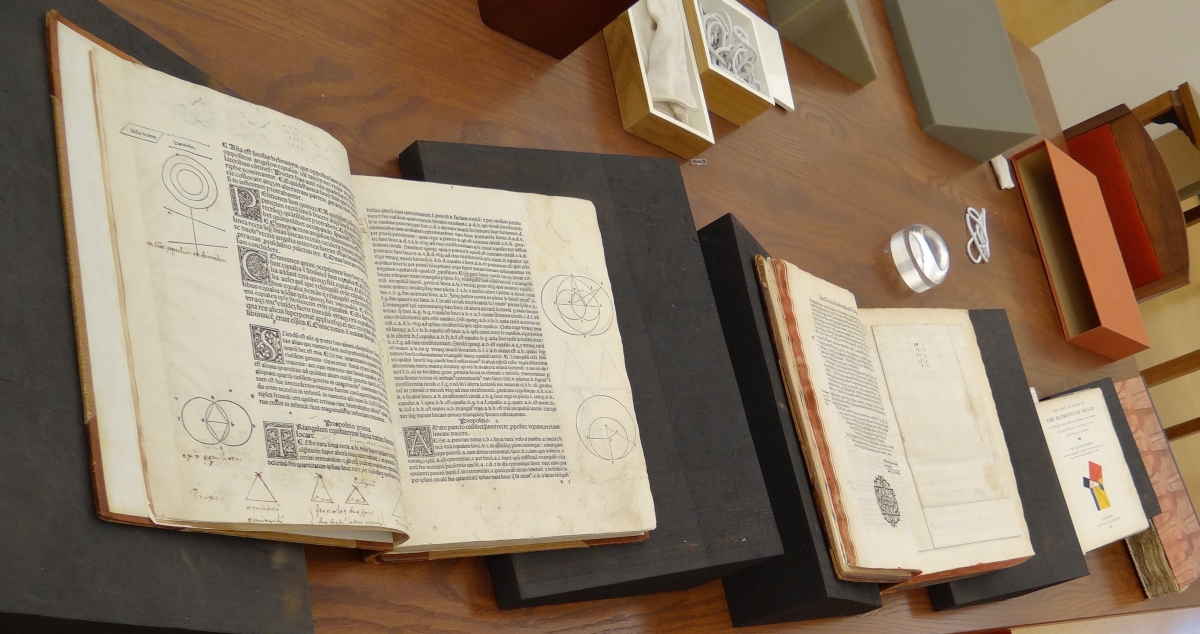
(D) 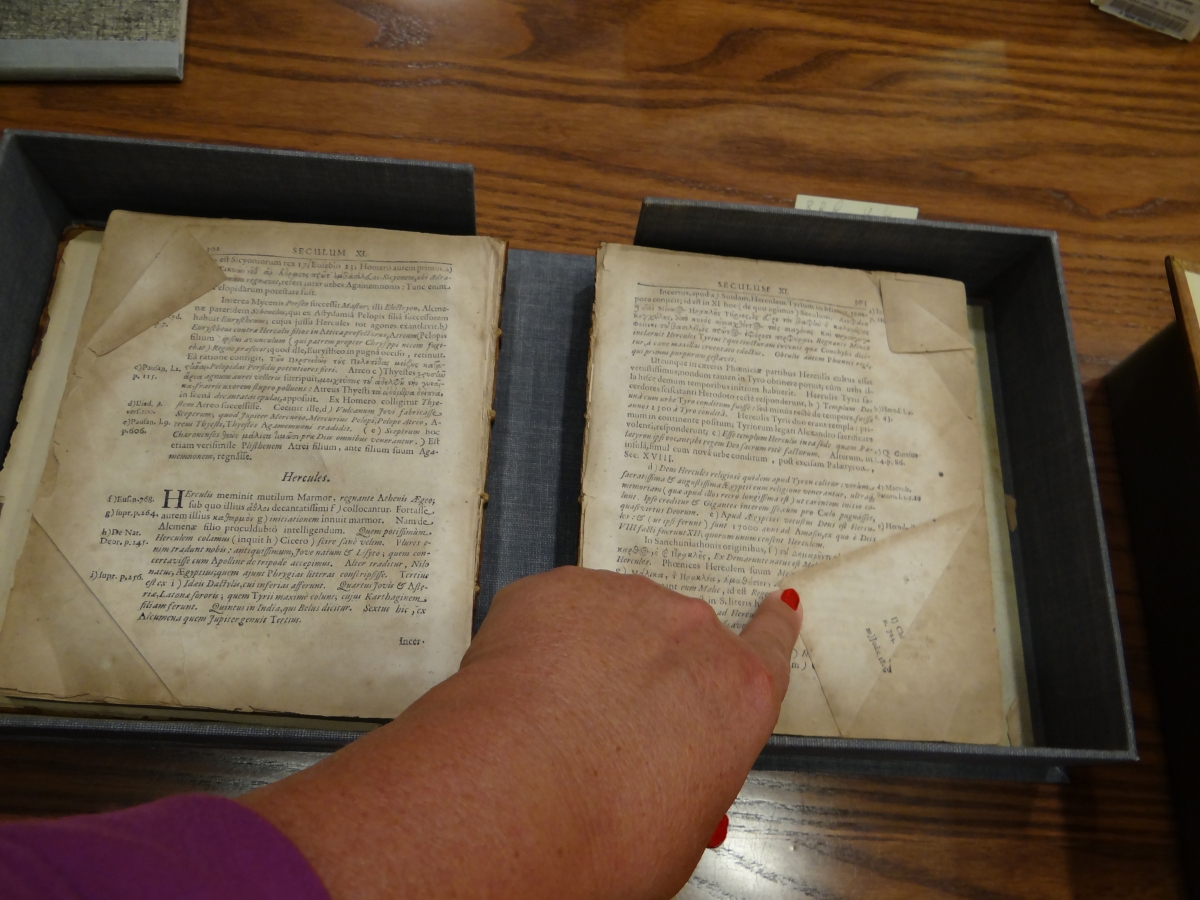
(F) 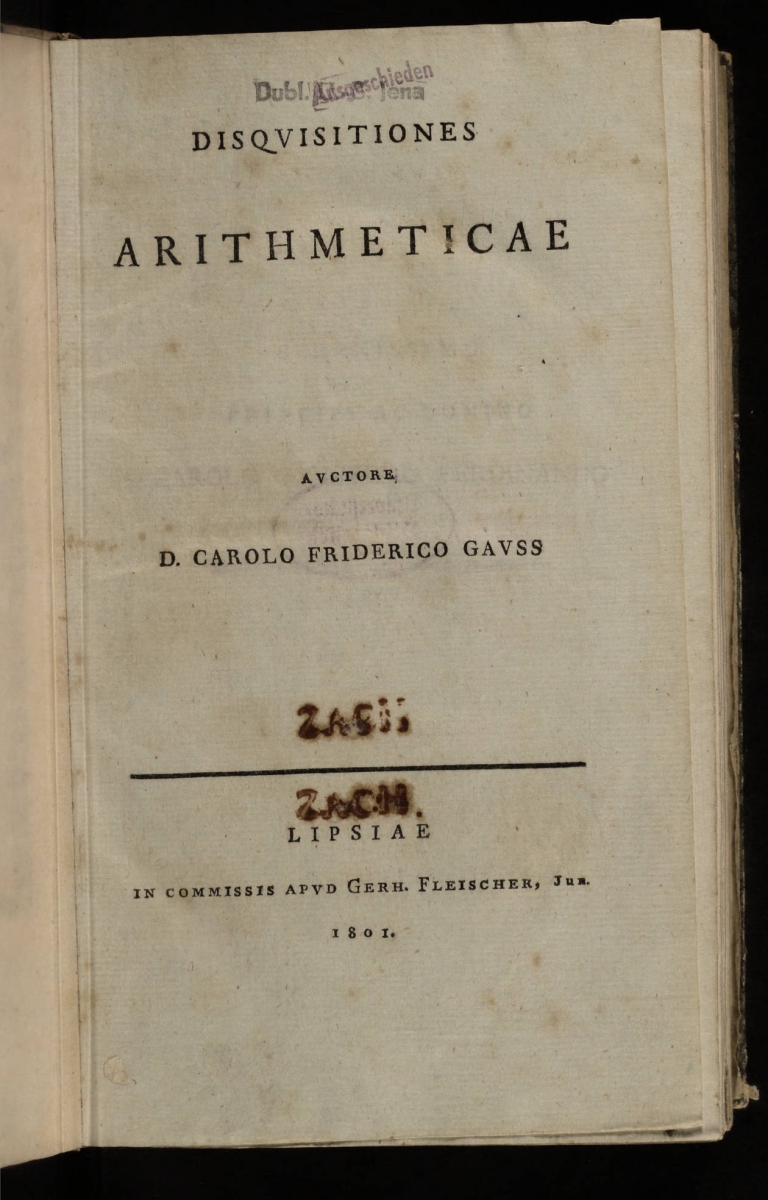 (G)
(G) 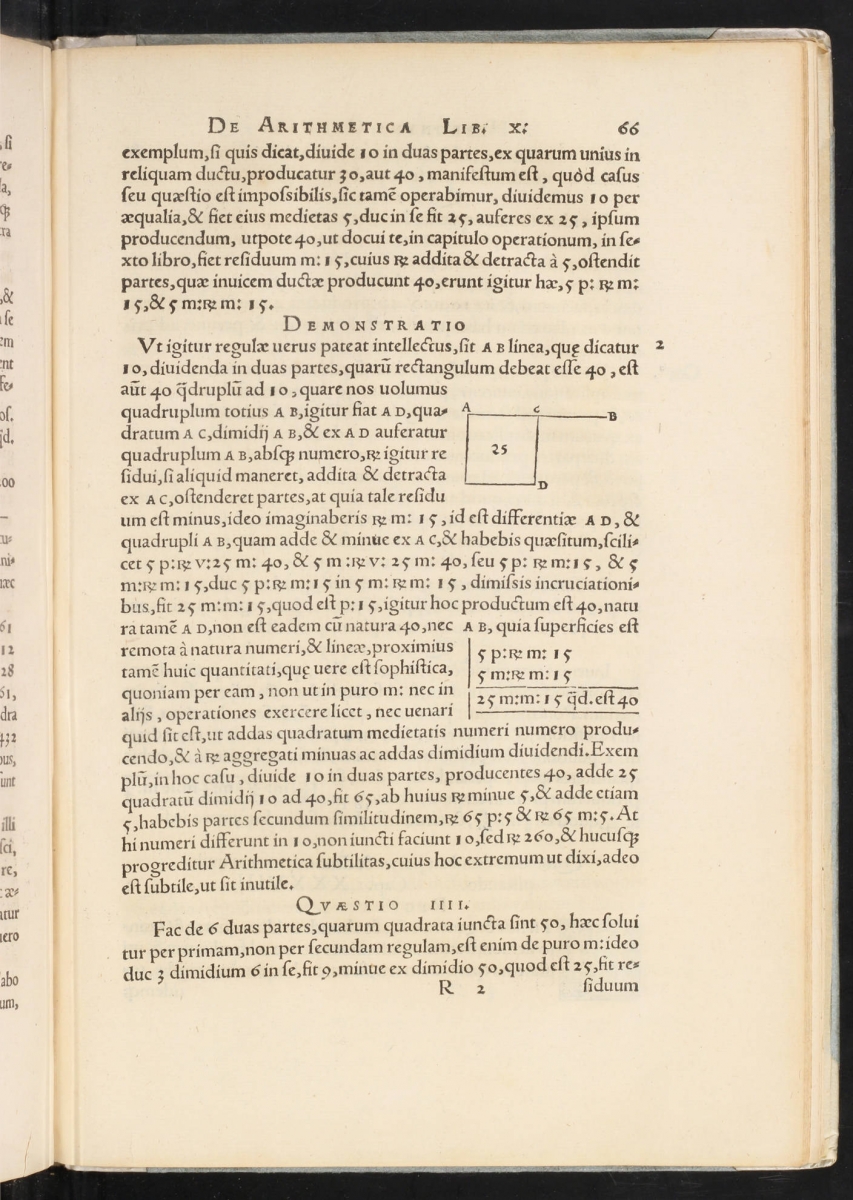
The purpose of this article is to share with teachers and researchers the amazing mathematical treasures available, either in person or online, at the Linda Hall Library. The author has made several trips there to gather pictures of original sources which she then included in lectures in various mathematics classes. In addition, she has taken students on tours of the rare book room in the library to see the books themselves. So, when one of the librarians mentioned the research fellowship program, the author could not pass up the opportunity to spend several weeks working with the books and helping the library to increase its digital collections in the history of mathematics.
This article begins with background about the Linda Hall Library and its services. Next is an index of select mathematical treasures one can find at the library. Clicking on the name of a work will take the reader to a page with information and images for classroom use. Each page also includes the call number of the work in case the reader wishes to visit the library and view the book in person. In addition, if the complete work is included in the Linda Hall Library Digital Collections, a link is provided.
